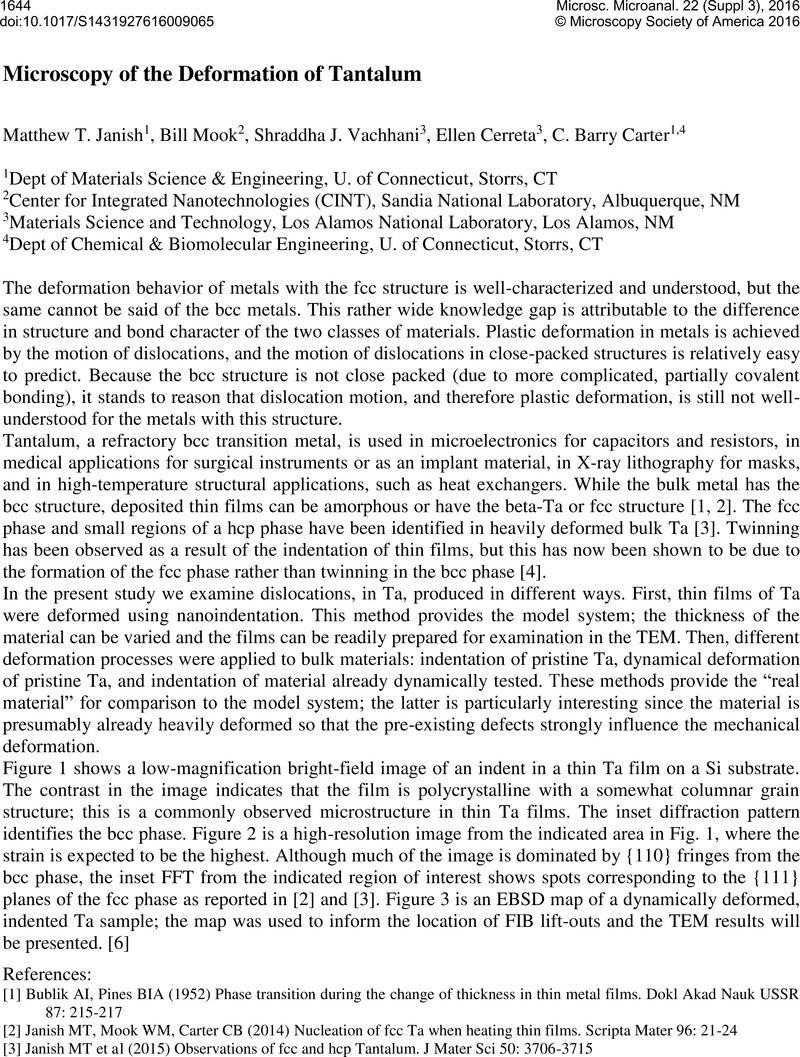No CrossRef data available.
Article contents
Microscopy of the Deformation of Tantalum
Published online by Cambridge University Press: 25 July 2016
Abstract
An abstract is not available for this content so a preview has been provided. As you have access to this content, a full PDF is available via the ‘Save PDF’ action button.

- Type
- Abstract
- Information
- Microscopy and Microanalysis , Volume 22 , Supplement S3: Proceedings of Microscopy & Microanalysis 2016 , July 2016 , pp. 1644 - 1645
- Copyright
- © Microscopy Society of America 2016
References
References:
[1]
Bublik, AI & Pines, BIA (1952).
Phase transition during the change of thickness in thin metal films.
Dokl Akad Nauk USSR
87, 215–217.Google Scholar
[2]
Janish, MT, Mook, WM & Carter, CB (2014).
Nucleation of fcc Ta when heating thin films.
Scripta Mater
96, 21–24.CrossRefGoogle Scholar
[3]
Janish, MT, et al. (2015).
Observations of fcc and hcp Tantalum.
J Mater Sci
50, 3706–3715.CrossRefGoogle Scholar
[4]
Wang, JW, et al. (2015).
In situ atomic-scale observation of twinning-dominated deformation in nanoscale body-centred cubic tungsten.
Nature Mater
14, 594–600.CrossRefGoogle ScholarPubMed
[5]
Vachhani, SJ, et al. (2015).
Microstructure and local mechanical property evolution during high strain-rate deformation of tantalum.
EPJ Web of Conferences
94, 02023–02021-02026.Google Scholar
[6] MTJ would like to acknowledge a GAANN fellowship from the Department of Education. This work was partly performed at Sandia National Laboratory at the Center for Integrated Nanotechnologies, which is a DOE-BES-supported National User Facility. Sandia is a multiprogram laboratory operated by Sandia Corporation, a Lockheed Martin Company, for the US Department of Energy under contract DEAC04-94AL85000.Google Scholar




